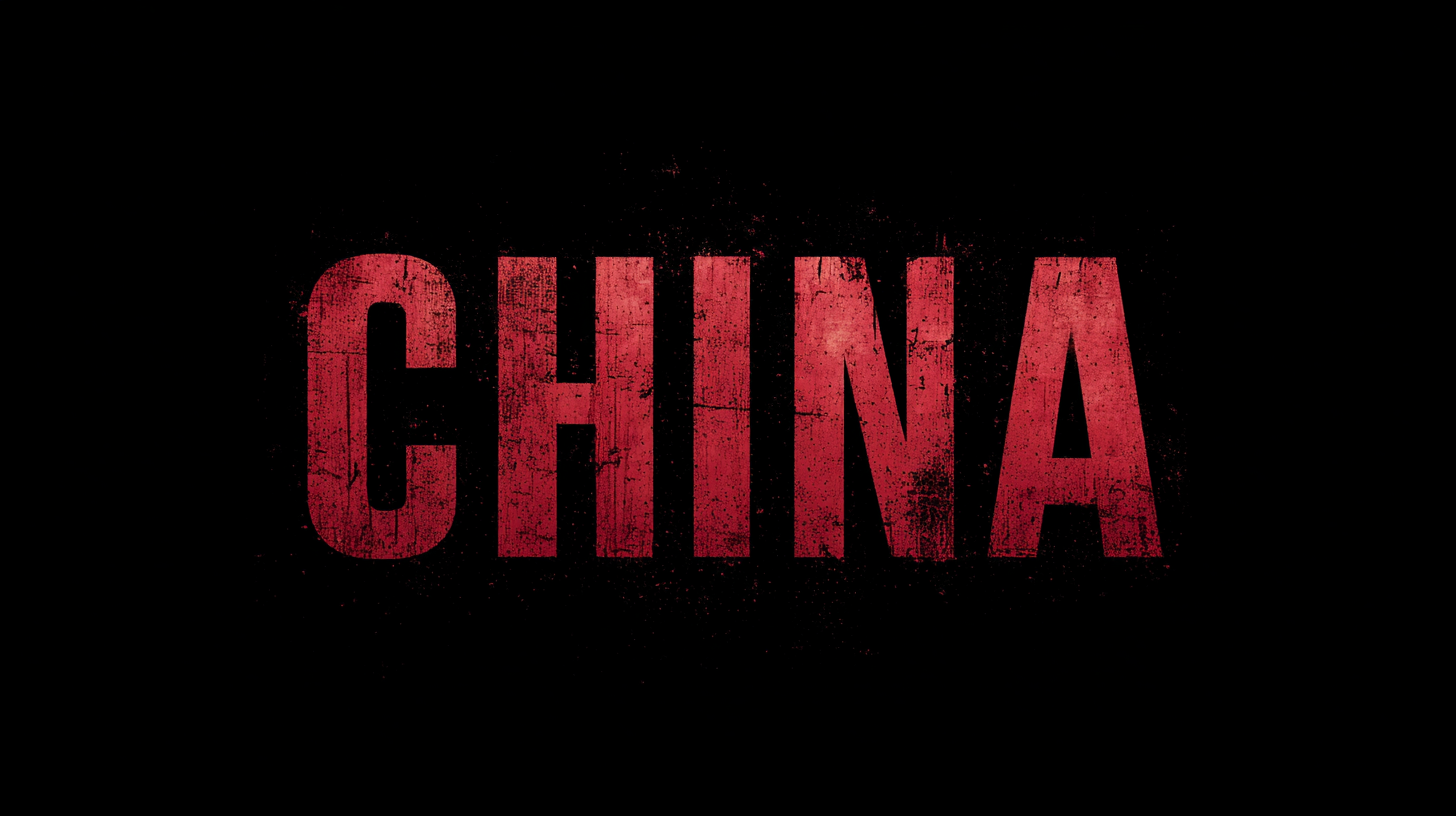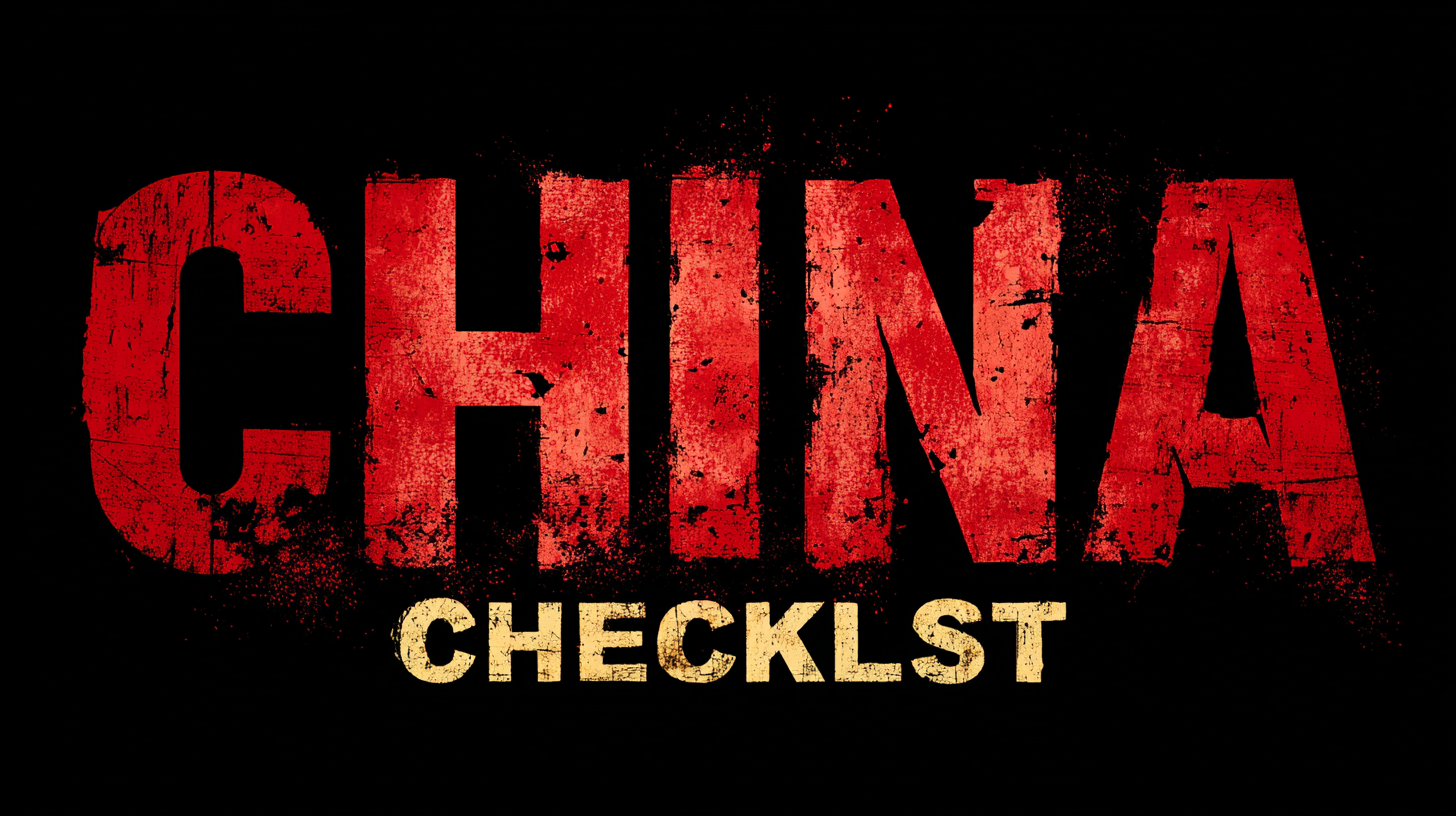Ultimate Guide to Finding the Best China Products with a Comprehensive Checklist
In today's global marketplace, sourcing high-quality products from China has become a pivotal strategy for many businesses. According to a 2021 report by Statista, China accounted for approximately 28.7% of the world's total merchandise exports, underscoring its dominance in the global supply chain. With thousands of suppliers available, navigating this vast landscape can be daunting for entrepreneurs seeking reliable partnerships.

A comprehensive checklist can streamline the process of identifying quality suppliers and products in China, ensuring that businesses not only save time and money but also maintain high standards in their offerings. By employing strategic approaches to supplier evaluation and product selection, companies can enhance their competitiveness and tap into the massive potential presented by the Chinese market.
This ultimate guide aims to equip you with the necessary tools and insights to successfully find and evaluate the best products and suppliers in China.
Understanding the Importance of Product Comparison in Sourcing from China
When sourcing products from China, product comparison is an essential strategy that can significantly impact the quality and cost-effectiveness of your purchases. According to a report by Statista, approximately 70% of global consumers are influenced by product comparison before making a buying decision. This highlights the necessity of having a systematic approach to evaluate options thoroughly, ensuring that you find the best products that meet your specific needs.
Tip: Create a checklist that includes key criteria such as price, quality certifications, supplier reliability, and shipping times. This can streamline your comparison process and help you make informed decisions.
In addition, recent findings from the Global Trade Report indicate that companies using comprehensive product comparison strategies can reduce their sourcing costs by up to 30%. By meticulously comparing various suppliers and their offerings, businesses can identify not only the most competitive prices but also those vendors that provide the best value in terms of customer service and product quality.
Tip: Utilize online platforms such as Alibaba and Made-in-China to access reviews and ratings of suppliers. This can provide valuable insights into their reputations and product performance, further enhancing your comparative analysis.
Key Criteria for Evaluating China Products: Quality, Price, and Reliability
When sourcing products from China, three key criteria should guide your assessment: quality, price, and reliability. According to a report by Statista, about 28% of small businesses cite quality control as their primary challenge when importing products from China. Quality should be a non-negotiable factor, as subpar products can damage your brand reputation. To evaluate quality effectively, consider requesting samples and conducting rigorous testing to ensure that the products meet your standards.
Price is another critical element. While it may be tempting to opt for the lowest bidder, it's essential to balance cost with quality. A report from Deloitte highlights that businesses often lose more in the long run by compromising on quality for cheaper alternatives, as they may face higher return rates and customer dissatisfaction. Always compare prices among multiple suppliers and be wary of prices that seem too good to be true.
Reliability encompasses not only the consistency in product quality but also the trustworthiness of your supplier. Researching suppliers through platforms like Alibaba or Global Sources, which provide verified supplier credentials, can help mitigate risks. Tips for ensuring reliability include checking for third-party certification, reading customer reviews, and establishing clear communication channels to ensure that your expectations align with the supplier’s capabilities.
Comparison of Key Criteria for Evaluating China Products
This chart illustrates the evaluation of key criteria when sourcing products from China, specifically focusing on Quality, Price, and Reliability.
Top Platforms for Comparing Chinese Products: Reviews and Features Breakdown
 When it comes to comparing Chinese products, choosing the right platform is crucial. With a staggering 1.58 billion active users, social media has become a powerful tool for marketers to gauge consumer trends and preferences. Platforms like TikTok offer unique opportunities for businesses to showcase their products, enabling potential buyers to engage with the items directly through immersive content. Furthermore, as the landscape continuously evolves, staying updated with the latest features is essential for maximizing product visibility and engagement.
When it comes to comparing Chinese products, choosing the right platform is crucial. With a staggering 1.58 billion active users, social media has become a powerful tool for marketers to gauge consumer trends and preferences. Platforms like TikTok offer unique opportunities for businesses to showcase their products, enabling potential buyers to engage with the items directly through immersive content. Furthermore, as the landscape continuously evolves, staying updated with the latest features is essential for maximizing product visibility and engagement.
In addition to social media, exploring dedicated dropshipping sites can enhance product discovery. Recent findings suggest that certain dropshipping platforms excel in product range, service charges, and customer reviews, making them ideal choices for sourcing quality items from China. By utilizing these platforms, businesses can streamline their purchasing processes and leverage user feedback to make informed decisions. Choosing the right platform not only simplifies procurement but also helps in aligning with consumer expectations, ensuring that businesses remain competitive in the dynamic e-commerce market.
How to Use a Checklist for Effective Product Comparison
In the quest to find the best products from China, utilizing a checklist for effective product comparison is paramount. A comprehensive checklist enables buyers to evaluate essential factors such as price, quality, supplier reliability, and shipping times. According to a report by Statista, the global e-commerce market is expected to reach $6.54 trillion by 2023, highlighting the increasing importance of thorough product research. By systematically comparing products, businesses can ensure they select the best options that meet their quality standards and budgetary constraints.
Tips for using a checklist effectively include prioritizing your criteria based on your specific needs. For instance, if you are in the electronics market, focus on specifications like compliance with industry standards and warranty offerings. Additionally, gather reviews and ratings from multiple sources to get an accurate picture of supplier reliability. A survey by Global Sources revealed that 71% of buyers considered product quality and supplier trustworthiness as the most critical factors in their purchasing decisions.
Another useful tip is to leverage online tools and platforms that allow for side-by-side product comparisons. Features such as user-generated content and ratings can provide deeper insights that plain specifications often miss. Remember that visual inspections or samples can also complement your checklist process, ensuring that the products live up to their descriptions. By refining your approach with these tips, you are well-equipped to navigate the vast market of China products efficiently.
Tips for Negotiating with Suppliers Based on Product Comparisons
When negotiating with suppliers in China, leveraging product comparisons can significantly enhance your bargaining power. Recent industry reports indicate that over 70% of buyers find that presenting comparative data about similar products from alternative suppliers helps to establish credibility and strengthen their negotiating position. By highlighting differences in pricing, quality, and delivery times, businesses can create a compelling case for better terms. In fact, a survey conducted by Statista revealed that effective negotiation tactics could improve purchase prices by up to 15%, underscoring the importance of a well-researched approach.

In addition to product comparisons, understanding the nuances of the market can guide your discussions. According to a report by McKinsey, companies that invest in analytics for supplier negotiations often achieve a 10-20% reduction in costs. It's essential to not only compare products but also to consider factors such as supplier reputation, production capacity, and lead times. Engaging in thorough due diligence enables you to approach your negotiations with clear objectives and a stronger understanding of the competitive landscape, ultimately leading to more favorable agreements with suppliers.
